整个展馆的几何形态由一种算法进行控制,这种算法可以使得一条单一连续的丝线覆盖每一个平板单元并且产生不同程度的密度差异。整体的密度差异被蚕所感知,使其作为一种生物打印机创造出第二层级的结构体系。
Research and Design by the Mediated Matter Research Group at the MIT Media Lab in collaboration with Prof. Fiorenzo Omenetto (TUFTS University) and Dr. James Weaver (WYSS Institute, Harvard University).
Prof. Neri Oxman, Markus Kayser, Jared Laucks, Carlos David Gonzalez Uribe, Jorge Duro-Royo
丝质展馆(the silk pavilion)研究了数字制造与生物制造在产品和建筑尺度这一层面上的关系。主要结构由26块丝线构成的多边形平板组成,丝线的位置由数控机床进行定位安装。项目的灵感来自蚕用蚕丝制成蚕茧的能力(所用蚕丝的长度大约在1km左右)。 整个展馆的几何形态由一种算法进行控制,这种算法可以使得一条单一连续的丝线覆盖每一个平板单元并且产生不同程度的密度差异。整体的密度差异被蚕所感知,使其作为一种生物打印机创造出第二层级的结构体系。
6500只蚕虫被放置在每一组单元的底部,这样他们可以在由数控设备建立的丝线系统中间进行再一次的填补作业。蚕在化蛹期之后被从装置上摘除掉,其产生的飞蛾可以制造出约一百五万个卵,这些卵可以建造最多250座这样的展示场所。受到空间与环境条件的影响,包括形态的密度以及自然光和热量条件,蚕被发现更倾向于向密度较大和较为黑暗的区域移动。期待的光线效果通过结构表面的材料组织来得以体现。特定季节的太阳轨迹决定了结构孔洞的位置,尺寸和密度,这样便可以锁定从南侧和东侧进入展览空间的自然光线。中心圆孔位于靠东里面一侧有机会可以作为太阳钟来使用。类似的基础研究探索着如何使用蚕来作为实体来“计算”基于外部环境因素进行材料组织。明确地说,我们研究了一种由蚕生成的非织造纤维结构形态,这种研究可以作为形状确定的计算原则和纤维材料表面结构的优化的基础。
The Silk Pavilion explores the relationship between digital and biological fabrication on product and architectural scales. The primary structure was created of 26 polygonal panels made of silk threads laid down by a CNC (Computer-Numerically Controlled) machine. Inspired by the silkworm’s ability to generate a 3D cocoon out of a single multi-property silk thread (1km in length), the overall geometry of the pavilion was created using an algorithm that assigns a single continuous thread across patches providing various degrees of density. Overall density variation was informed by the silkworm itself deployed as a biological printer in the creation of a secondary structure. A swarm of 6,500 silkworms was positioned at the bottom rim of the scaffold spinning flat non-woven silk patches as they locally reinforced the gaps across CNC-deposited silk fibers. Following their pupation stage the silkworms were removed. Resulting moths can produce 1.5 million eggs with the potential of constructing up to 250 additional pavilions. Affected by spatial and environmental conditions including geometrical density as well as variation in natural light and heat, the silkworms were found to migrate to darker and denser areas. Desired light effects informed variations in material organization across the surface area of the structure. A season-specific sun path diagram mapping solar trajectories in space dictated the location, size and density of apertures within the structure in order to lock-in rays of natural light entering the pavilion from South and East elevations. The central oculus is located against the East elevation and may be used as a sun-clock. Parallel basic research explored the use of silkworms as entities that can “compute” material organization based on external performance criteria. Specifically, we explored the formation of non-woven fiber structures generated by the silkworms as a computational schema for determining shape and material optimization of fiber-based surface structures.
[本文由建筑设计师张一楠编译,如需转载请注明出处,署名编辑作者]


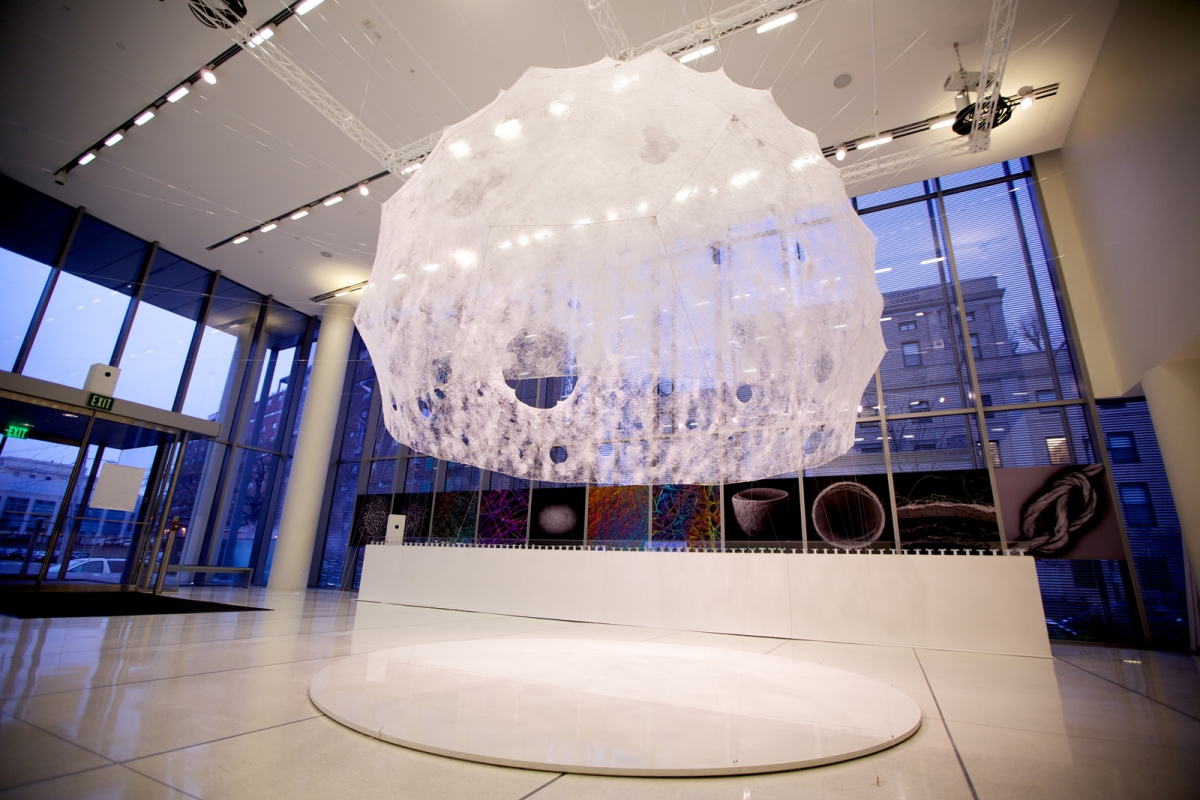

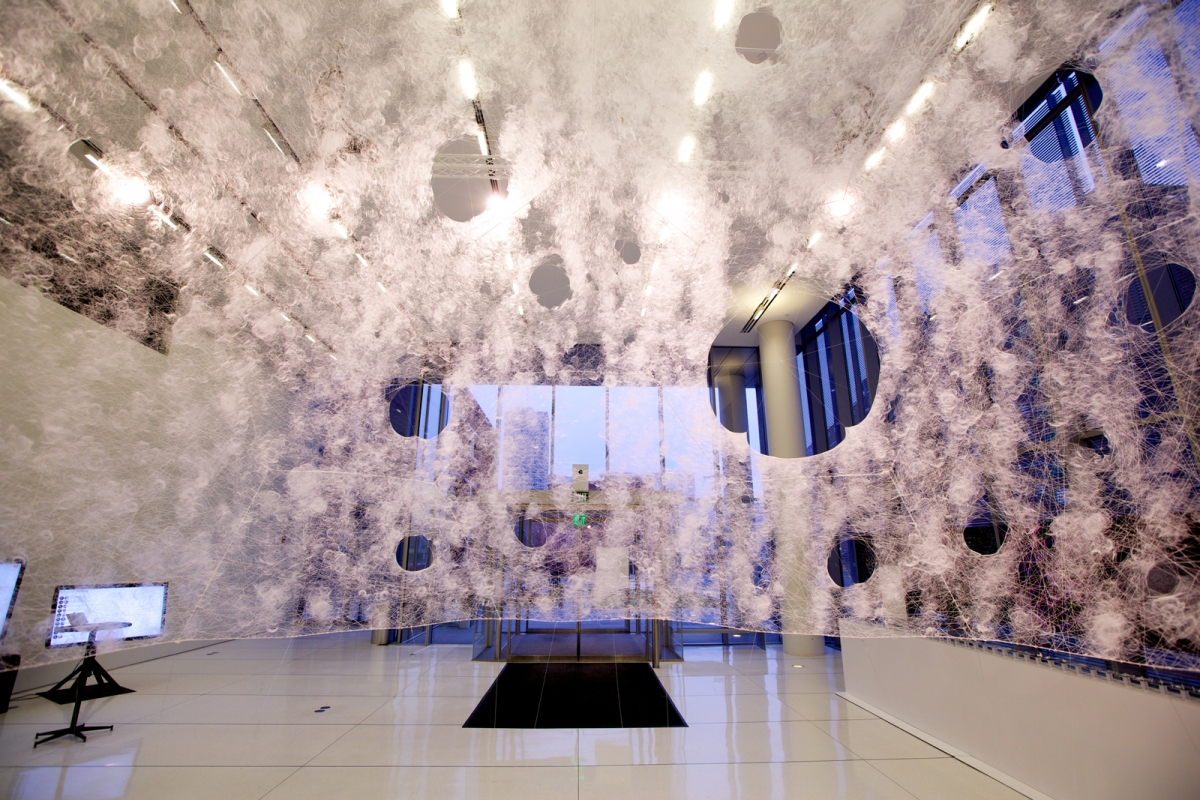
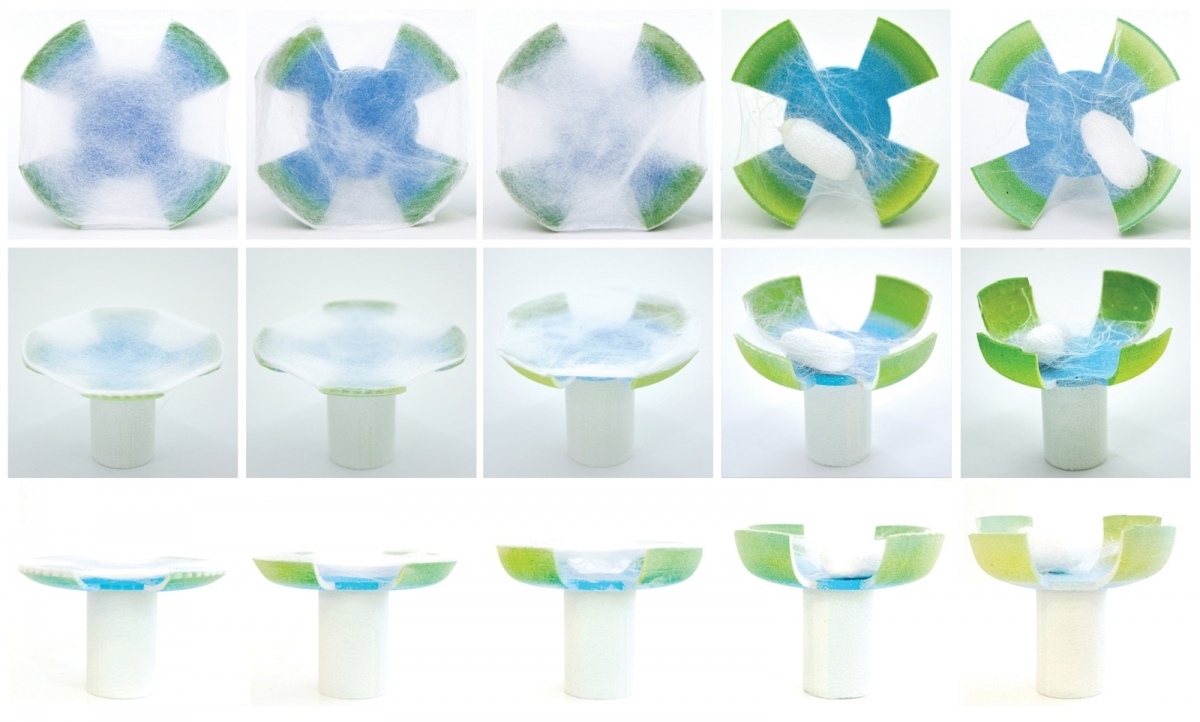

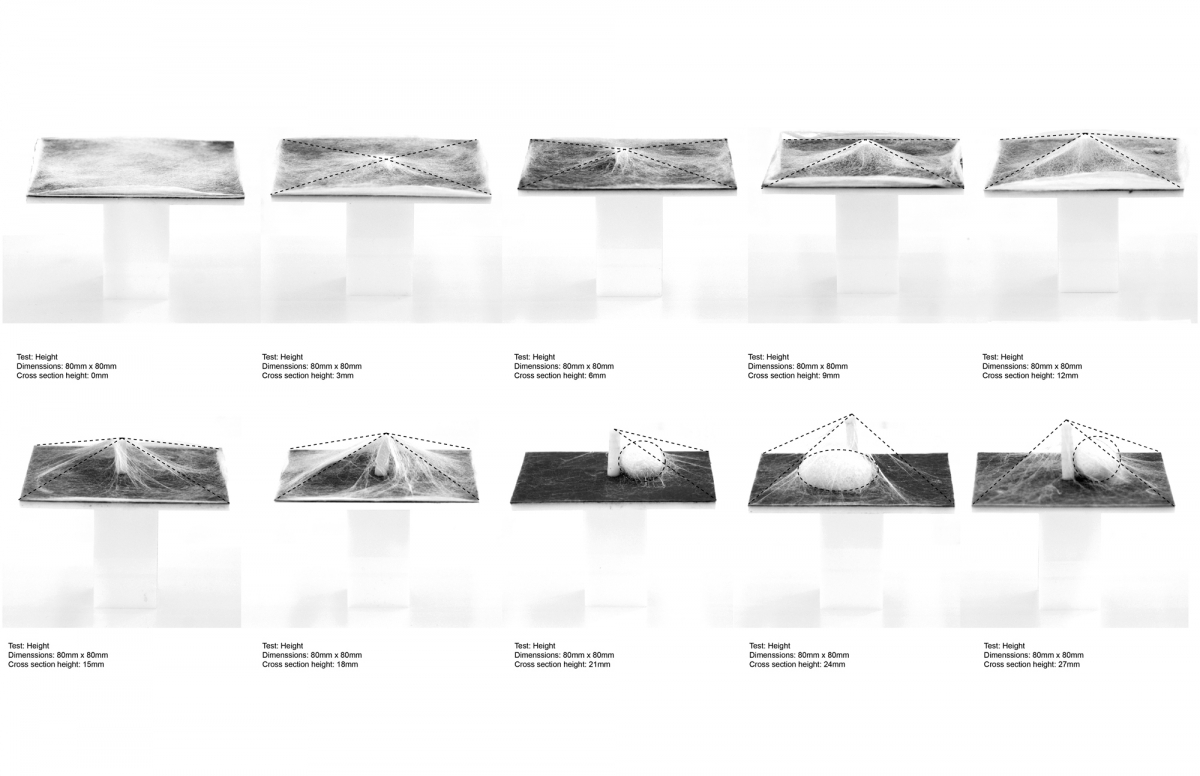
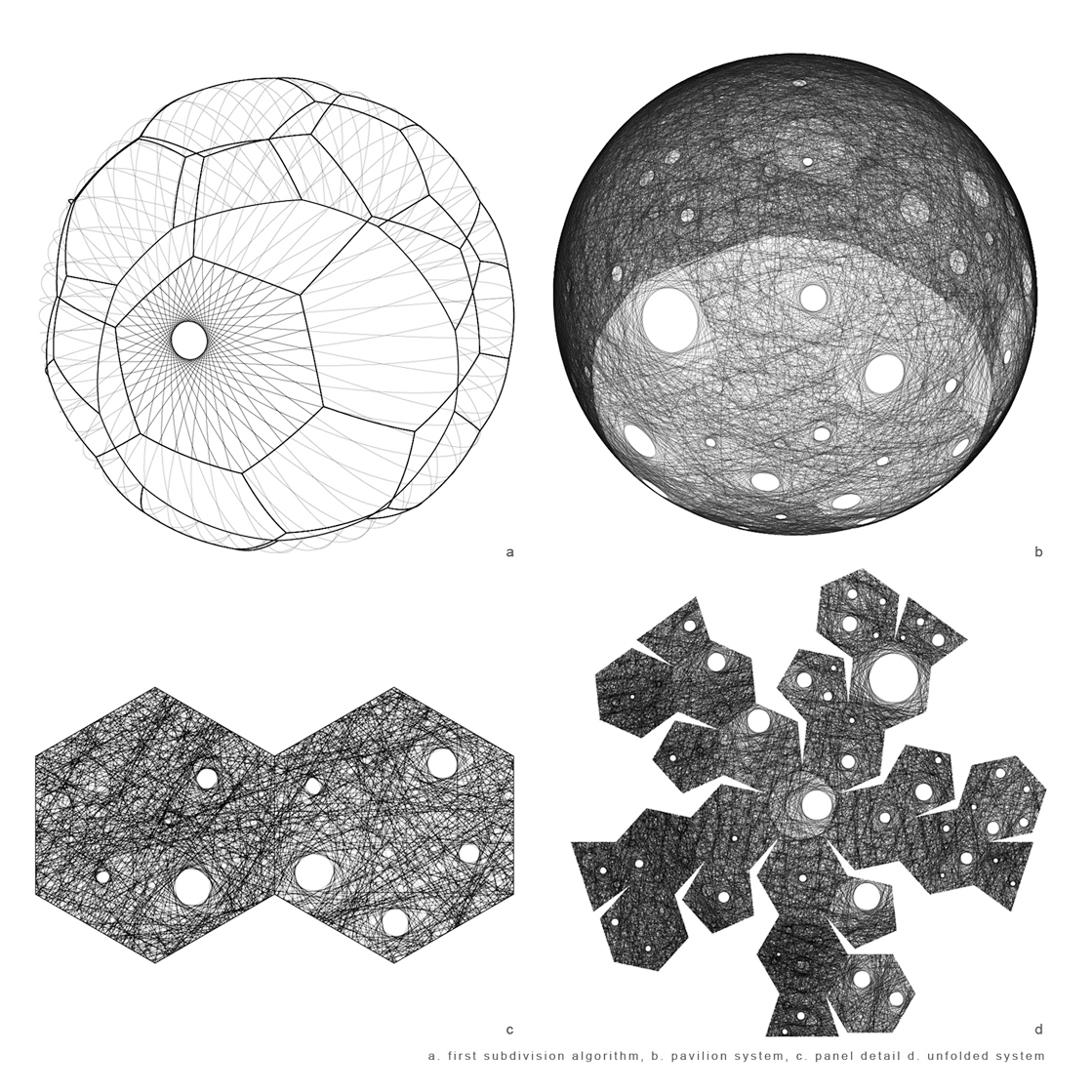
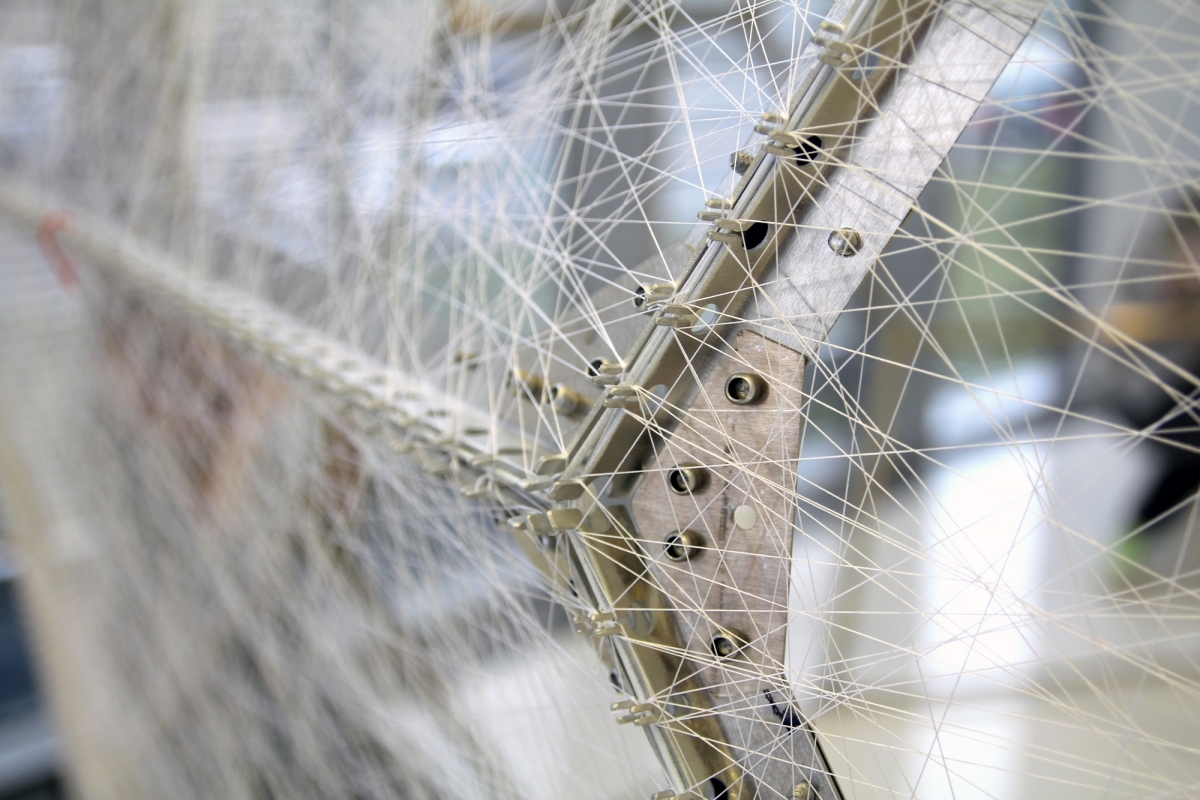
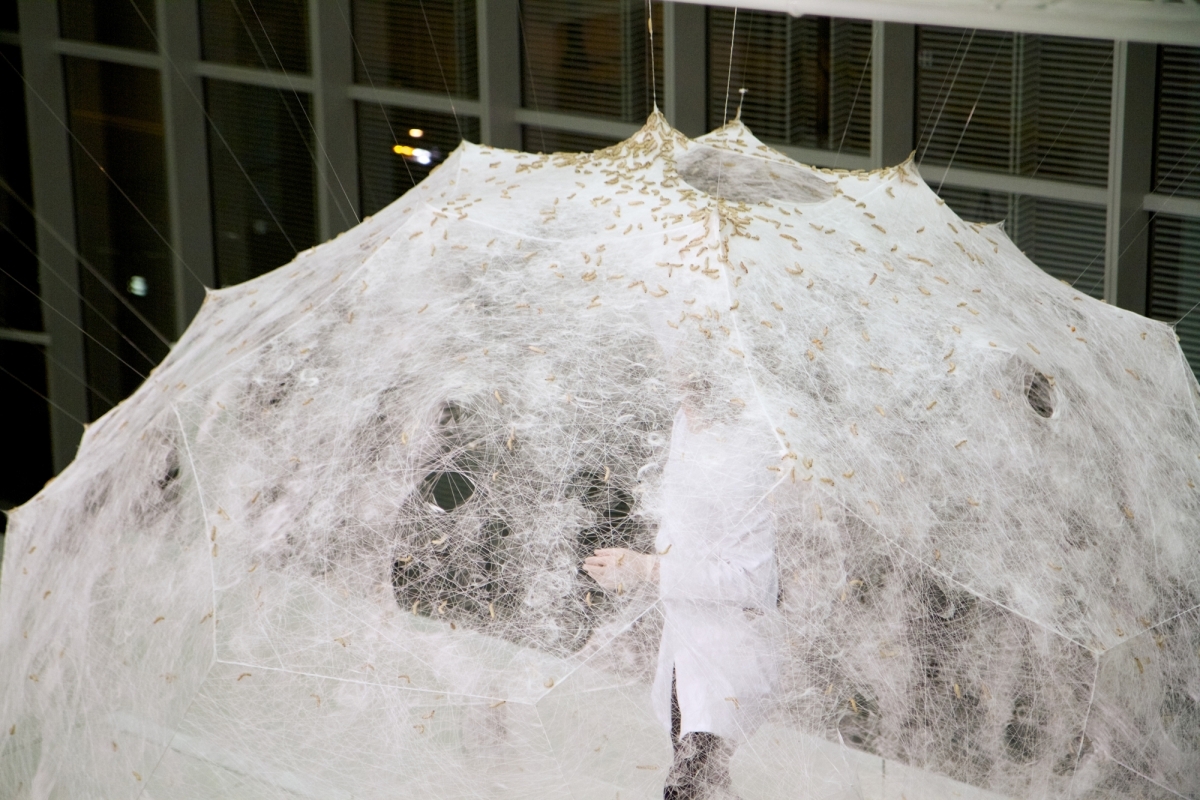
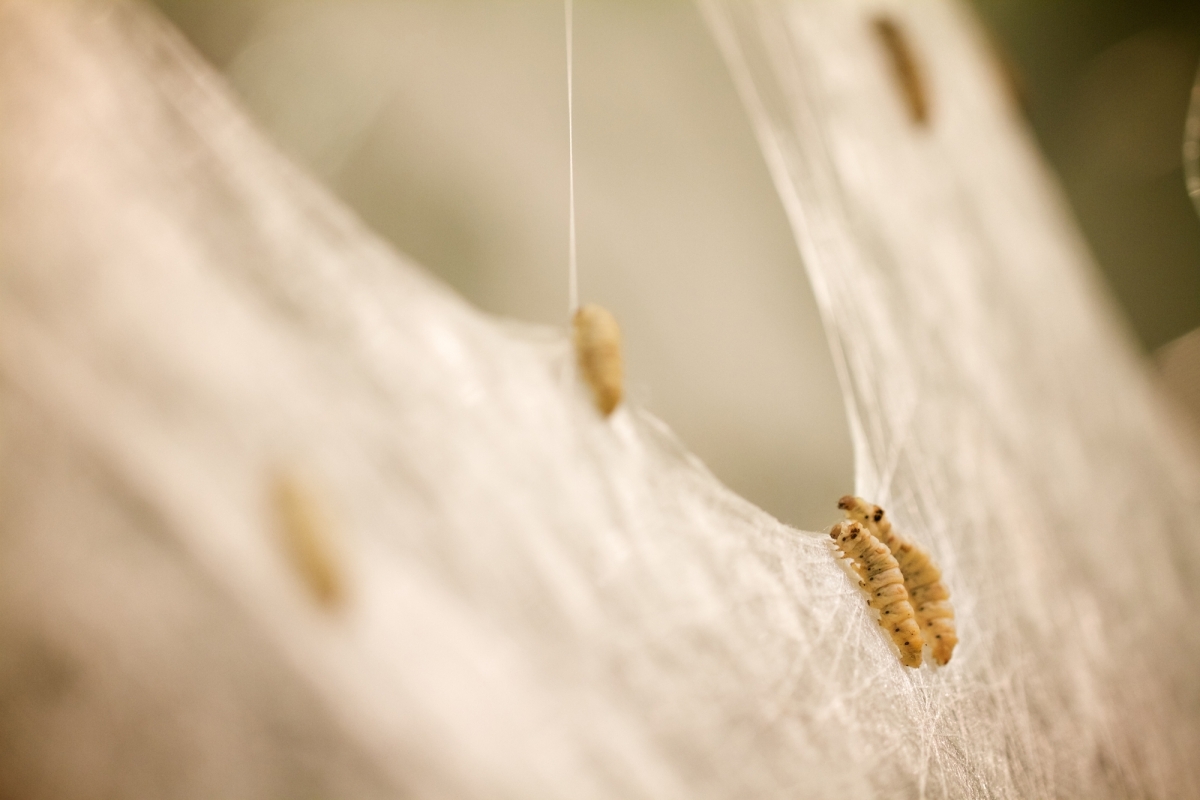

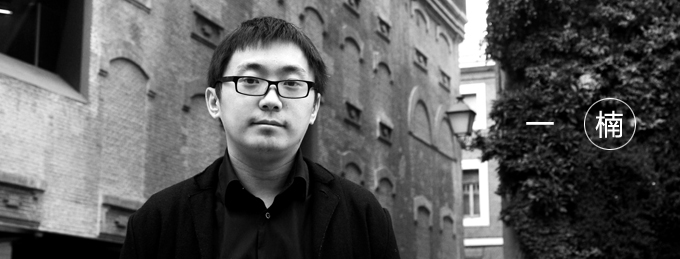






-50x50.jpg)


